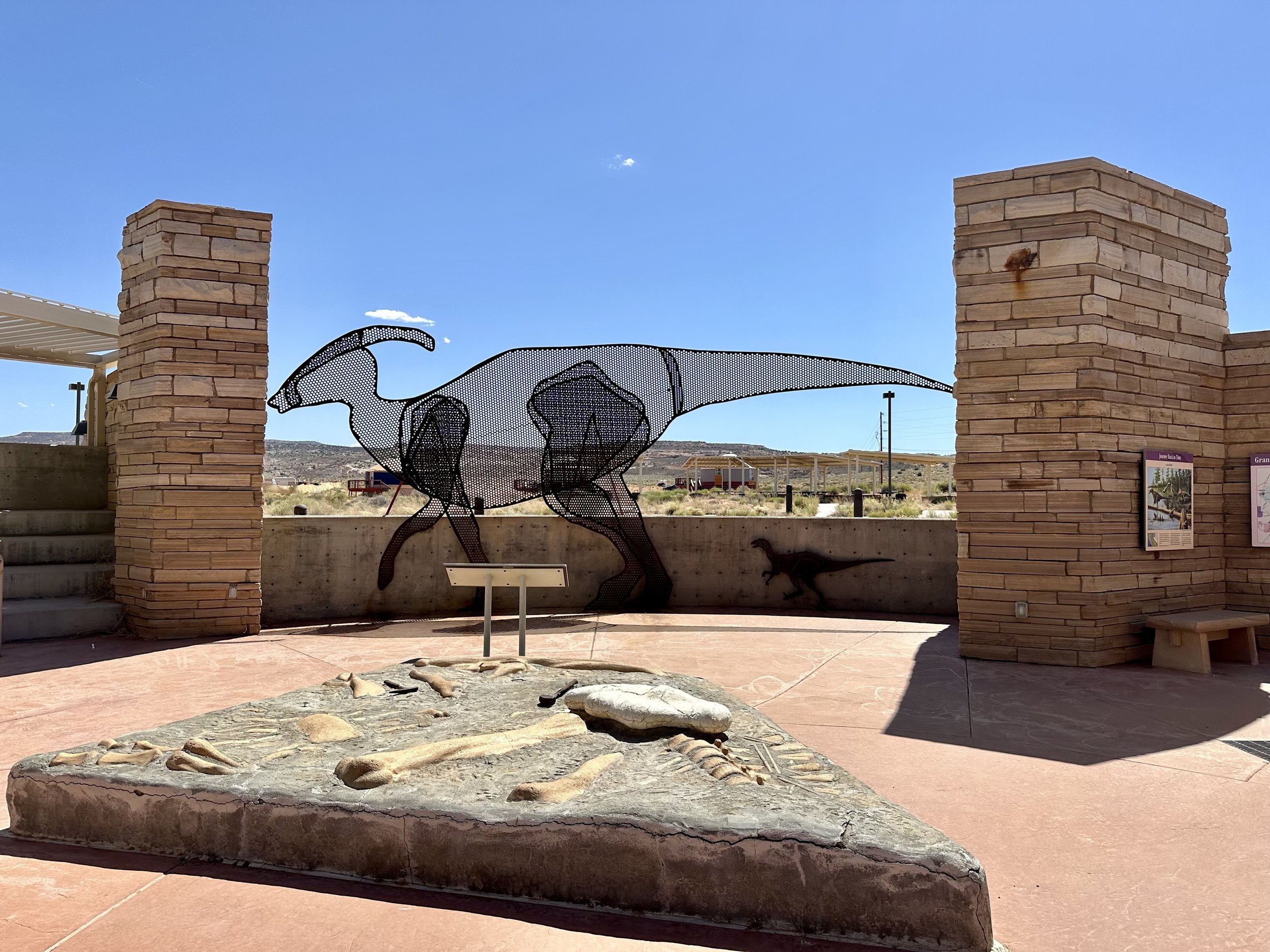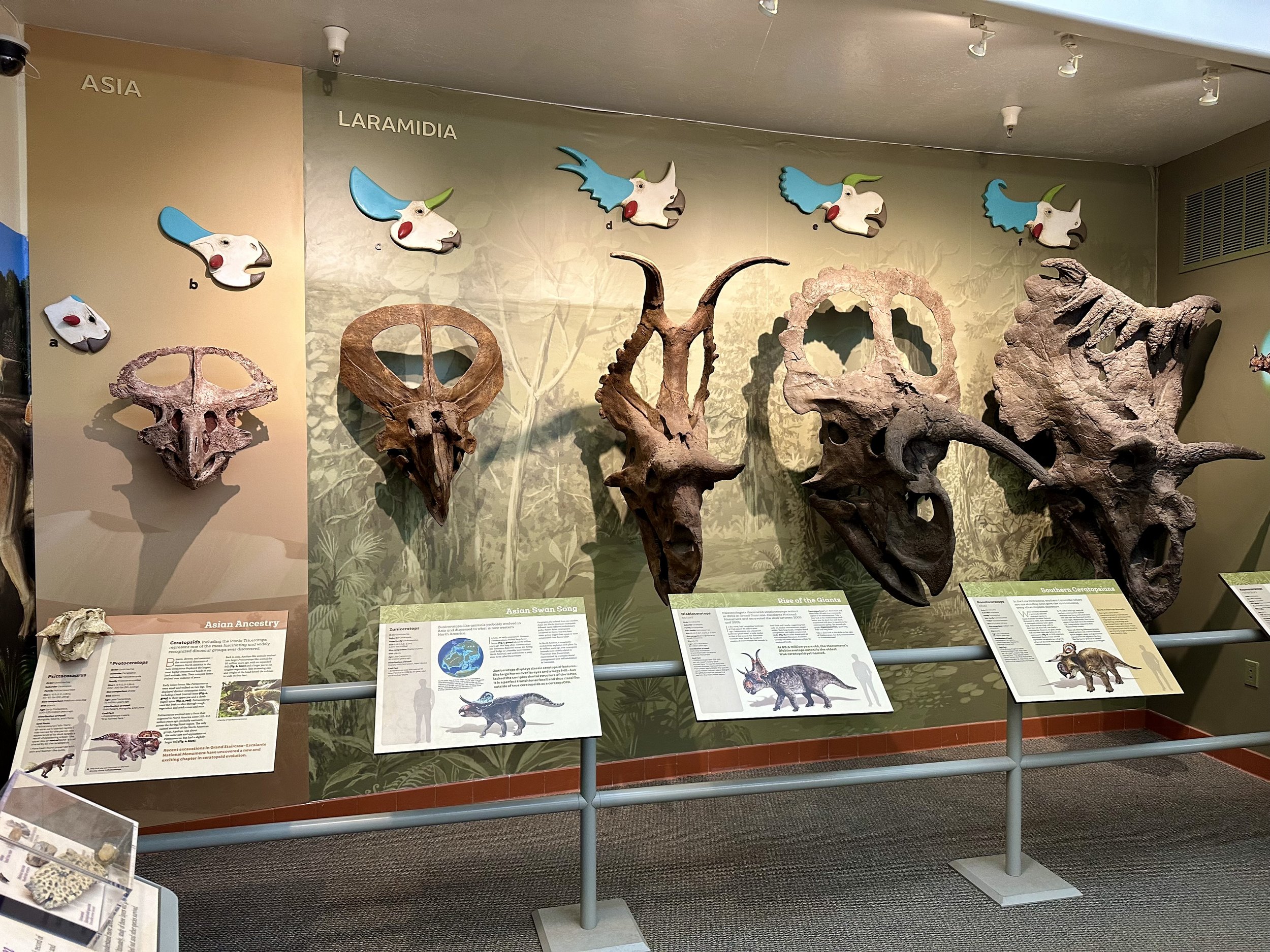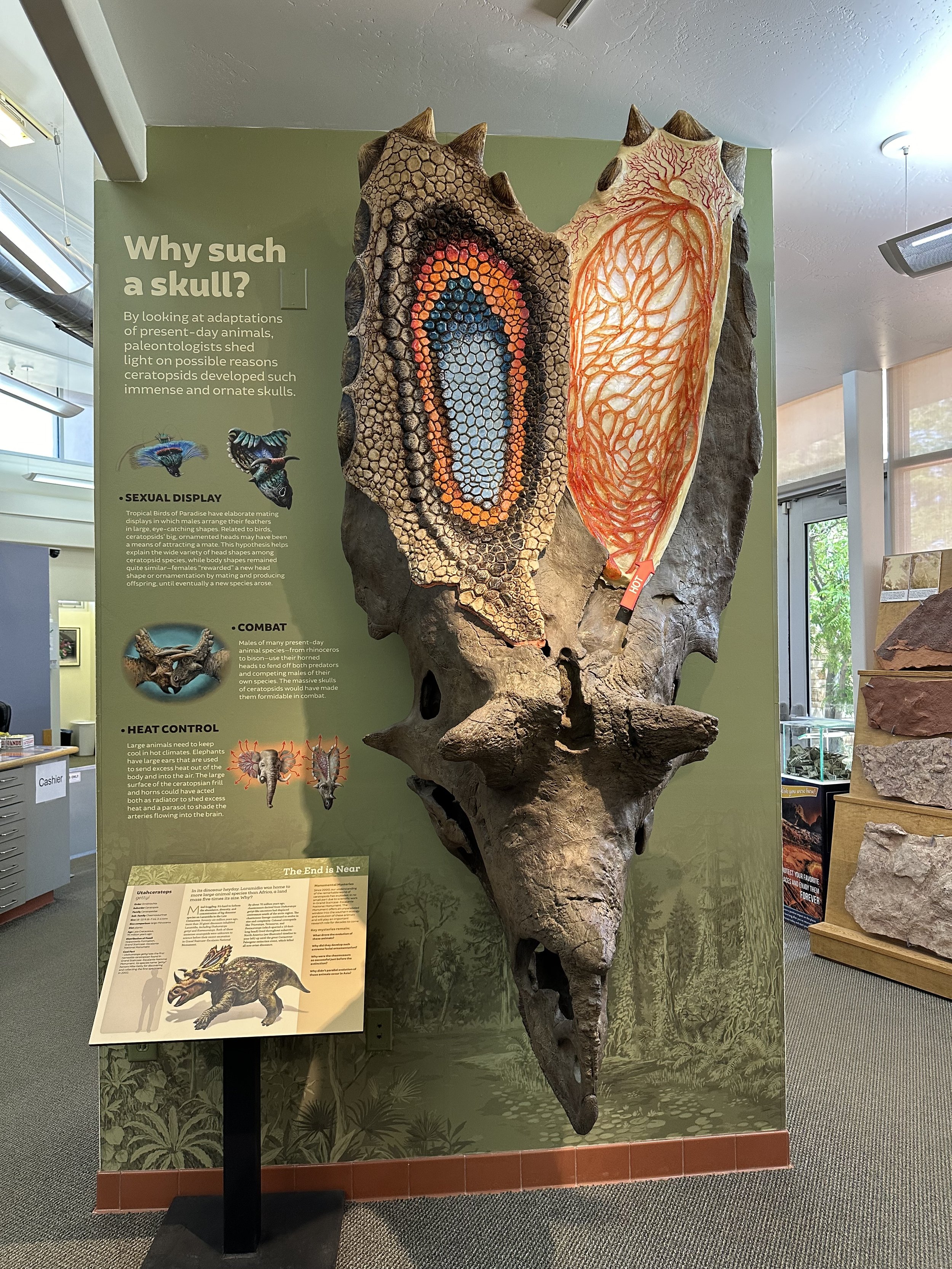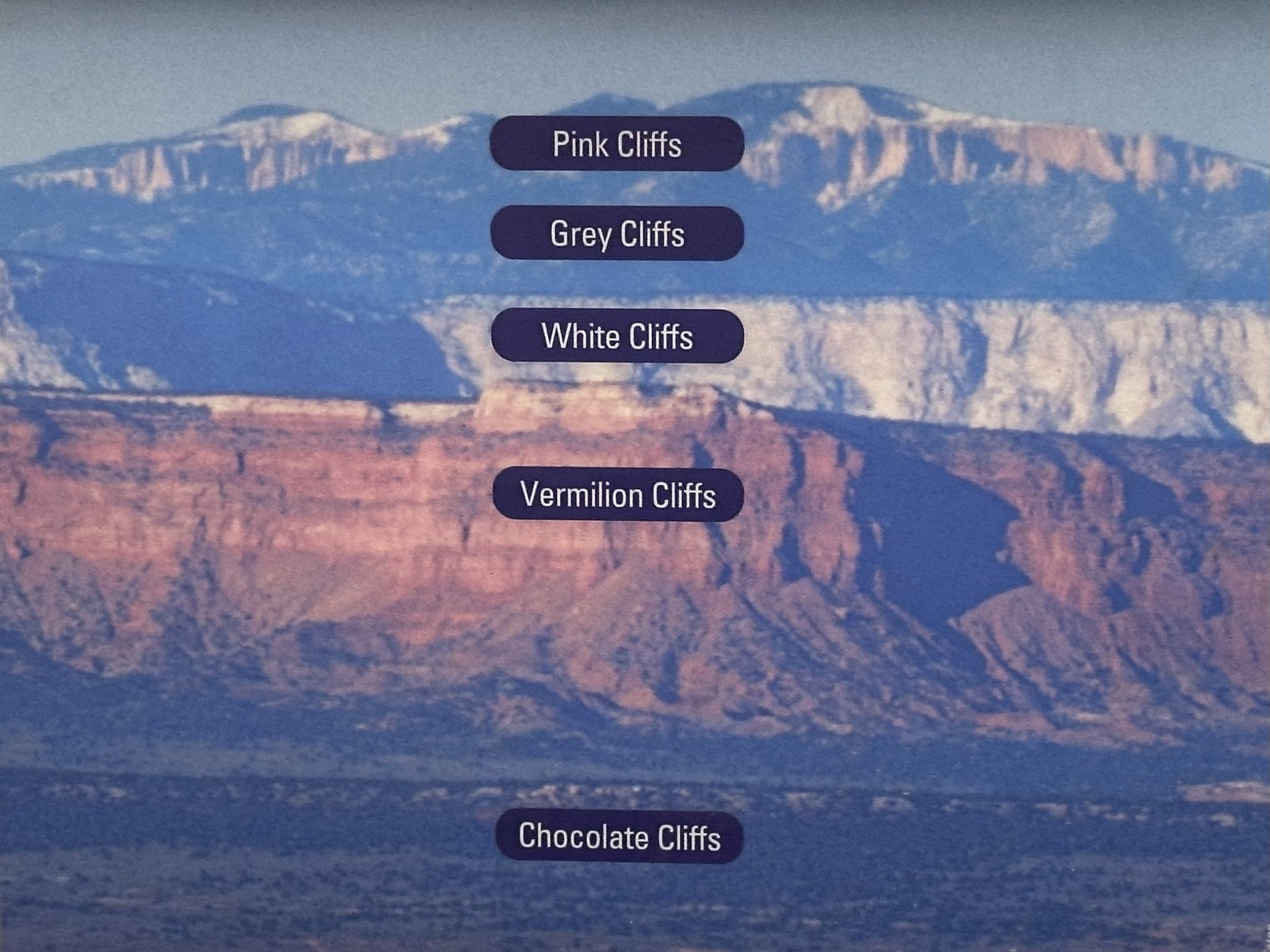Glen Canyon Dam
On our way out of Page, Arizona, we drove across Lake Powell and stopped by the visitor center to get a closer look at the Glen Canyon Dam. There were some interesting exhibits explaining how the dam was built and how it generates electricity. We drove further west and stopped to admire the vast beauty of Lake Powell - though it was clear from the white ring along the shoreline that the water level was troublingly low.
Fun facts:
The Glen Canyon Dam provides electricity and water to the seven states that the Colorado River passes through on its way to Mexico (Colorado, Wyoming, Utah, New Mexico, Arizona, Nevada, and California).
At 583 feet high and 1,560 feet wide, the Glen Canyon Dam is the second largest dam on the Colorado River (behind the Hoover Dam).
Lake Powell has nearly 2,000 miles of shoreline - more than the entire west coast of the United States. Lake Mead holds more water, but Lake Powell has a larger surface area.
Like an “aquatic bank,” Lake Powell stores water during times of drought, ensuring equitable distribution of water to the seven states.
With both lakes at low water levels, some believe Lake Powell should be drained and all water stored in Lake Mead. It’s a bold idea, and it will be interesting to see how this plays out.
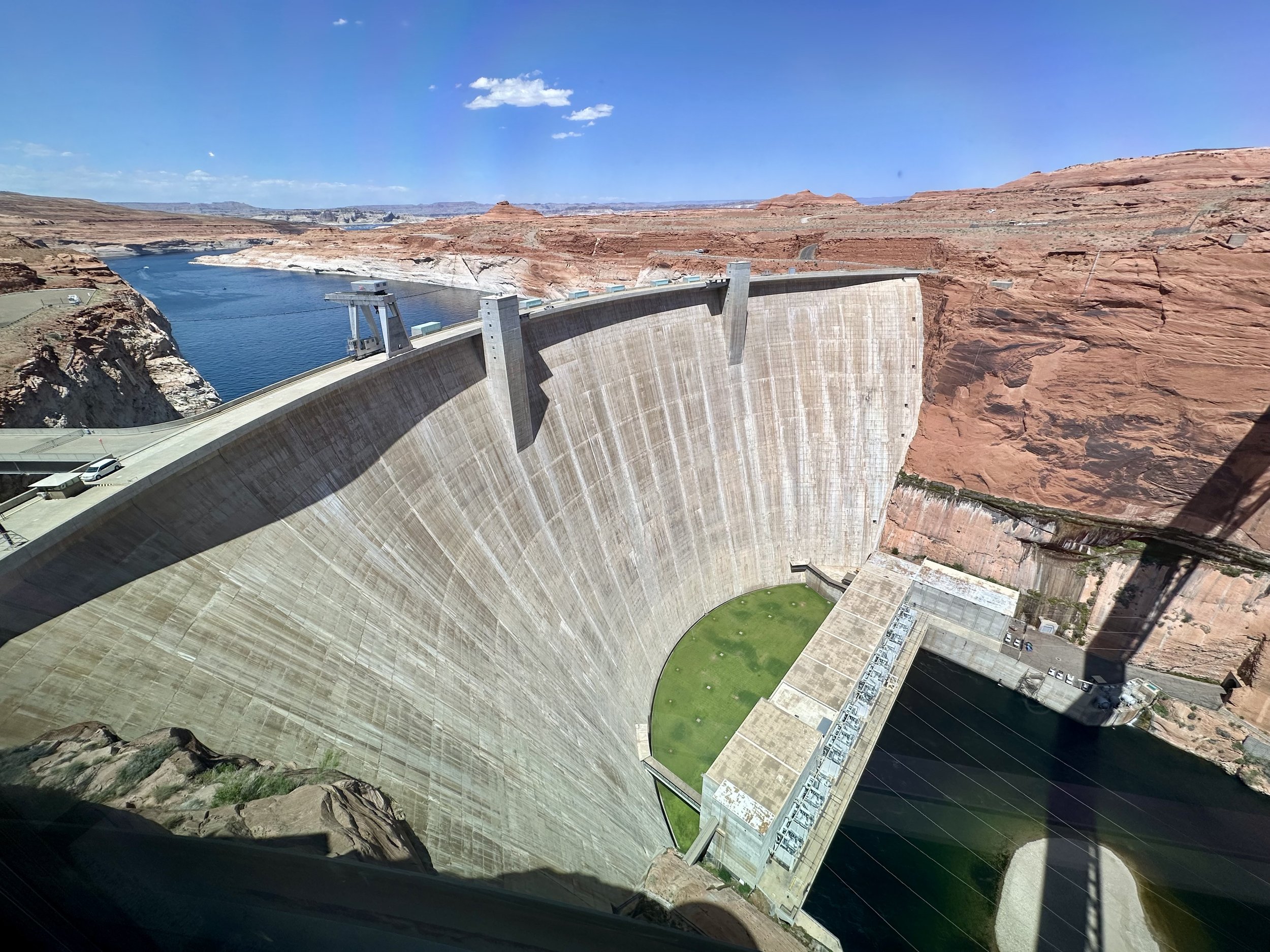
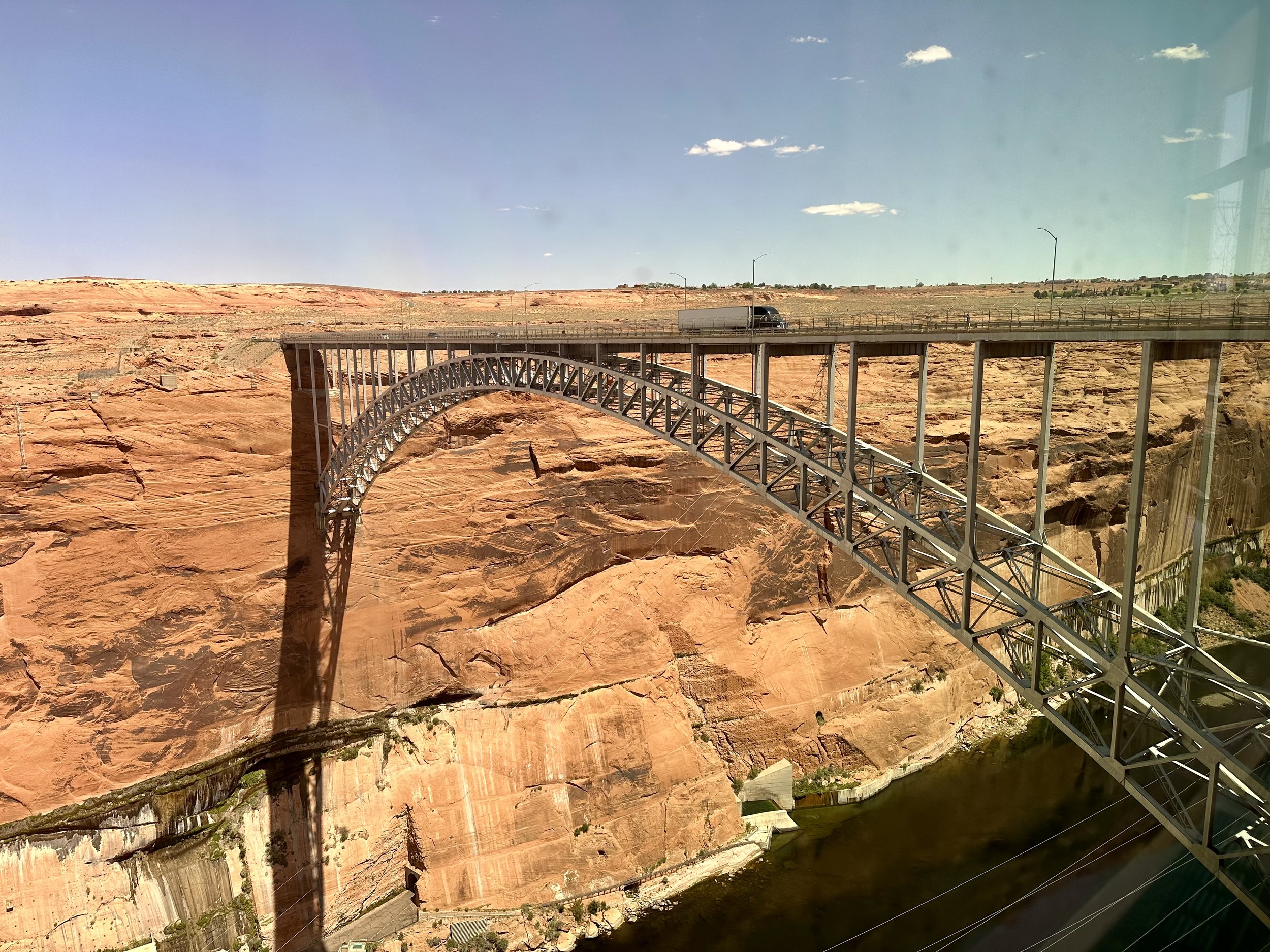
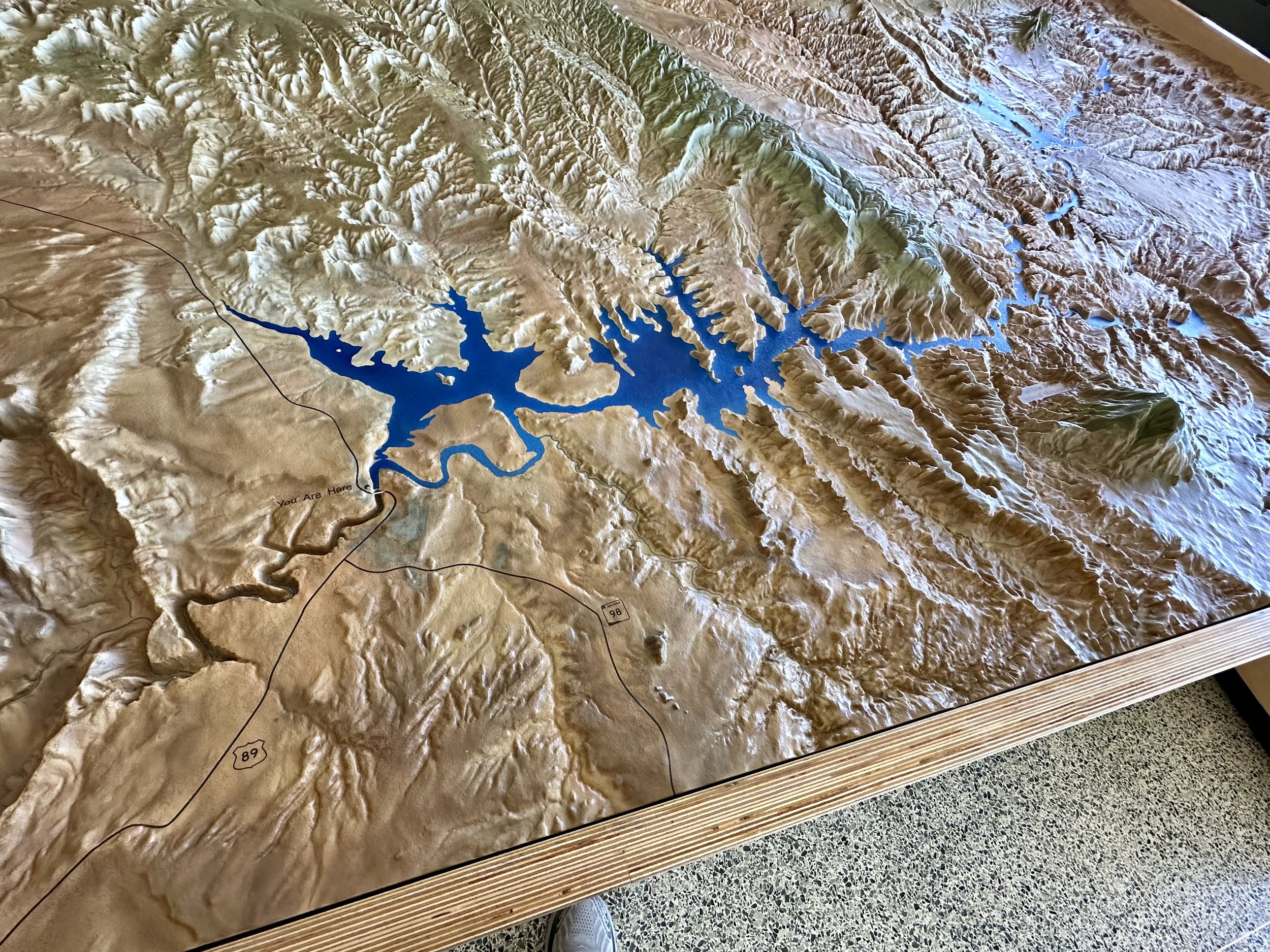
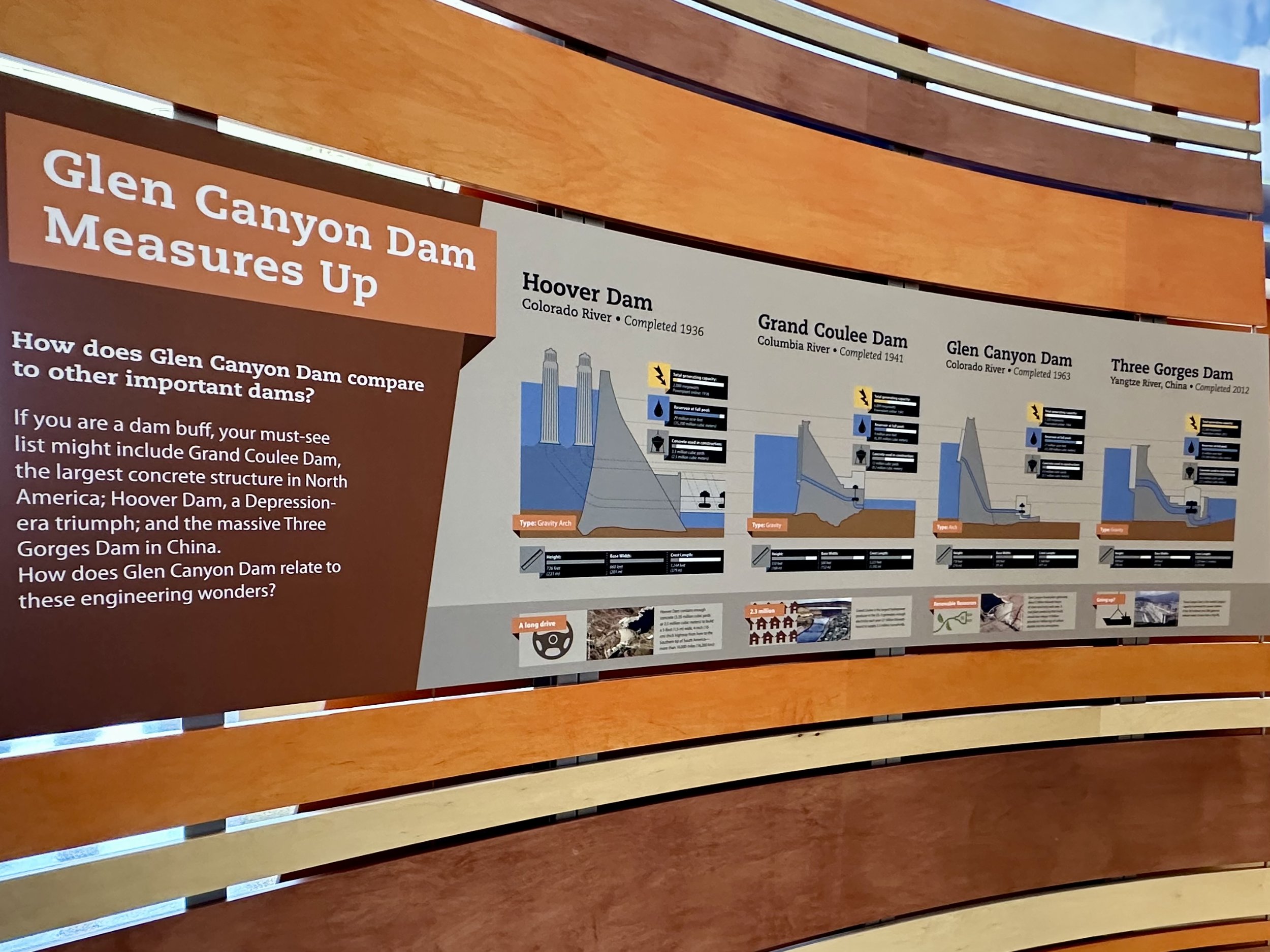
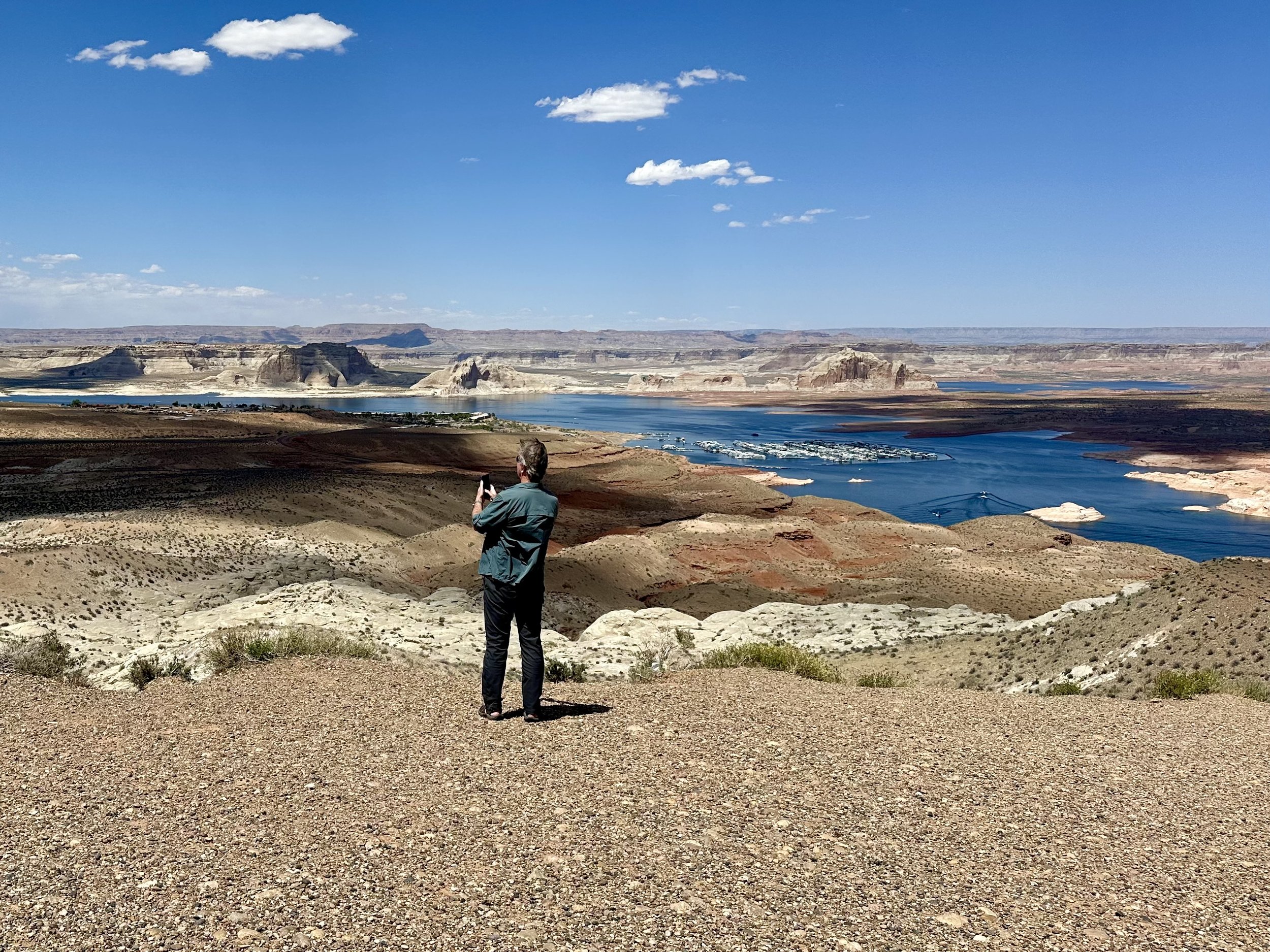
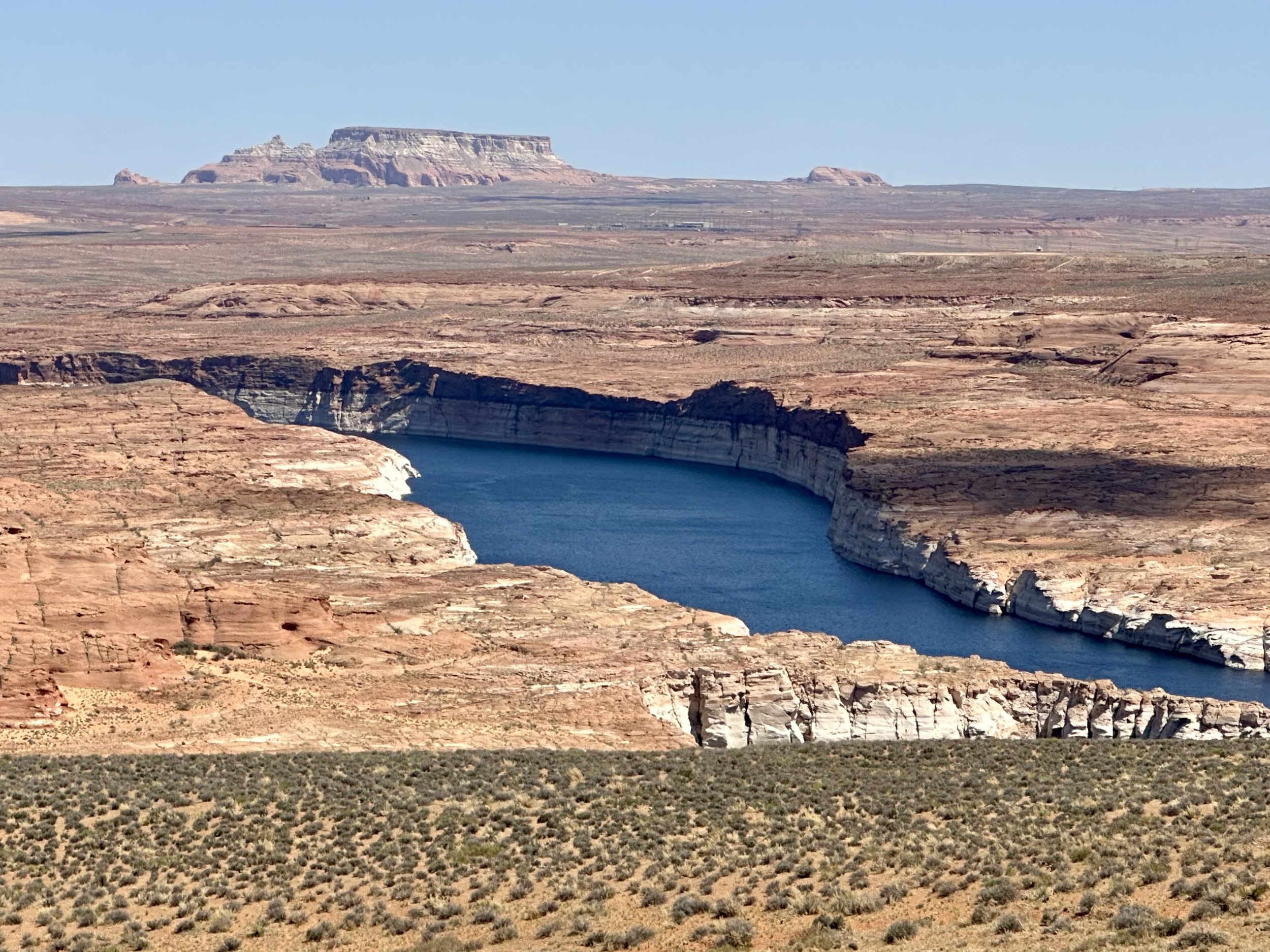
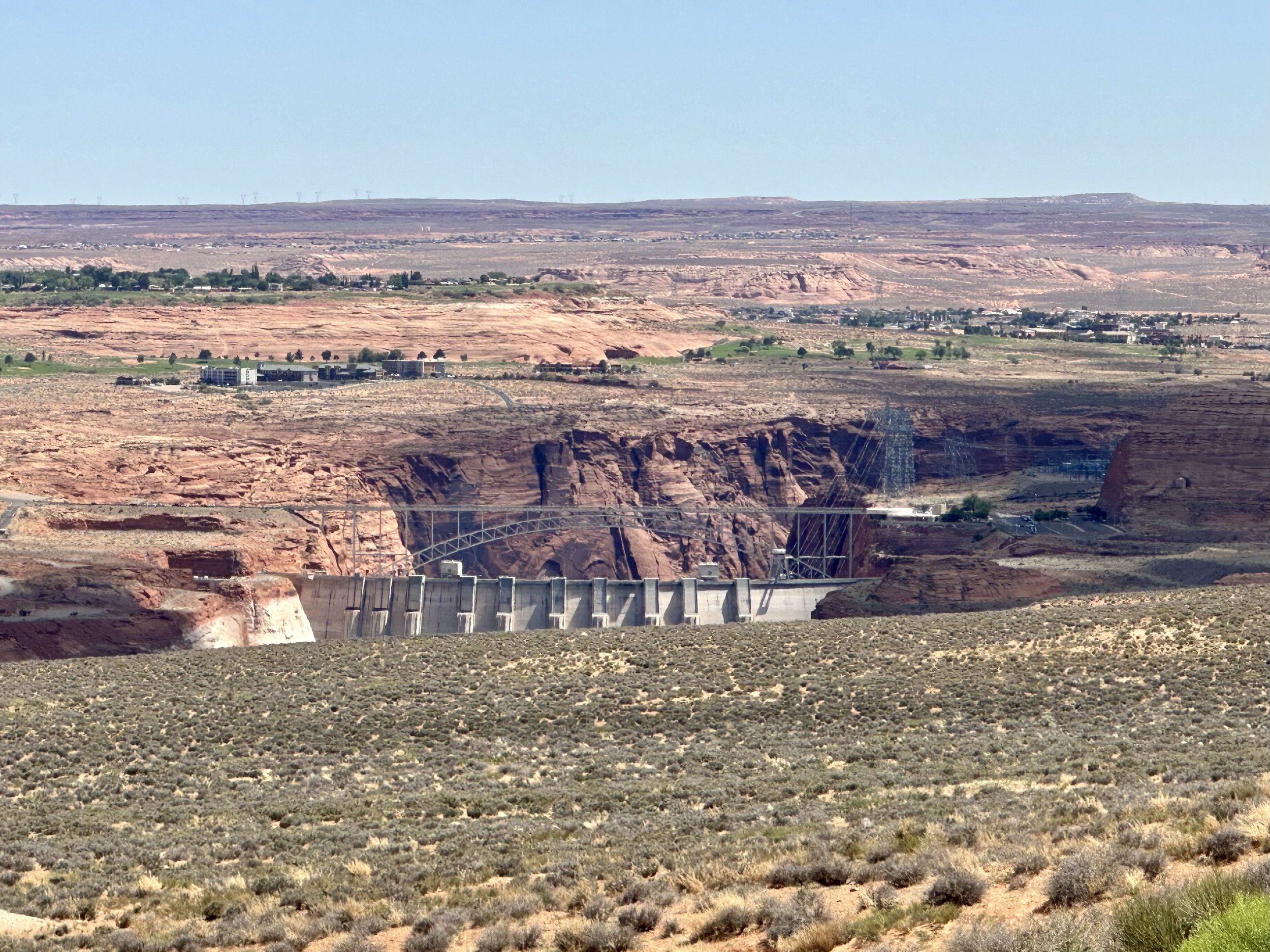
A little further west from the dam is a small visitor center called Big Water. Here we learned that the triceratops was just one in a fascinating group of dinosaurs called ceratopsids. Their unusual skulls with “frills” were uncovered in recent excavations here. We also learned that we were on the Grand Staircase, a series of five ginormous “steps.” Each step is a long cliff up to 2,000 ft tall and up to 15 miles wide, and each one is composed of a different color rock. Bryce Canyon (pink) is at the top, Zion National Park (white) is in the middle, and the Grand Canyon is at the bottom. Now there’s some perspective for you.
